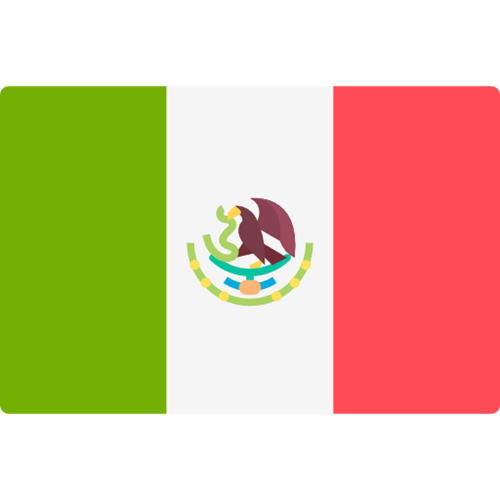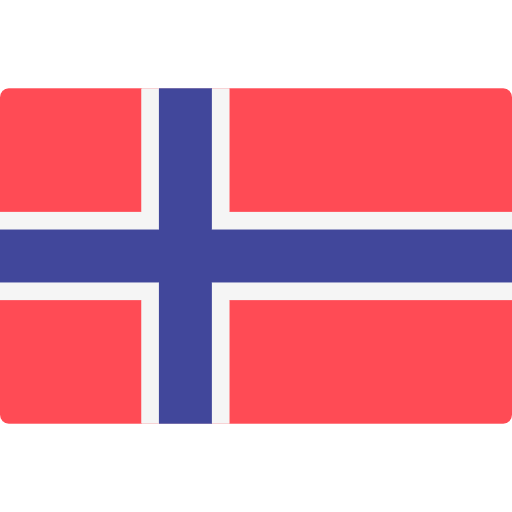Drone spraying regulation and opportunities in Europe

An interview with the first registered drone pilot for crop protection in Hungary*
Legal, safe, and effective drone spraying has great potential for the future of crop protection. But there are risks - in this article, Andras Borhi of Eurofins Agroscience Services (HU), talks to Agroinform.hu about drone spraying regulation and opportunities in Europe.
András Borhi is the first registered drone pilot for crop protection in Hungary, featured on the official list recently published by the Nébih (National Food Safety Office in Hungary).
In his role at Eurofins Agroscience Services, Hungary, he works as a plant protection specialist and precision agricultural engineer managing GEP and GLP field testing. Andras has been interested in the applicability of drone technology in agriculture for several years, and his diploma thesis in precision agricultural engineering, which he completed in 2020, focused on the regulatory status, practical applicability, and experience of spraying drones.
In this interview, he discusses the necessary requirements to feature on Nébih's list, the challenges he sees with drone spraying in practice, and what he believes is needed to make this new technology a legal, safe and effective practice in agriculture.
Q. In Hungary, many people are experimenting with the use of drones in agriculture with varying degrees of success, but you are the first in Hungary to be on the list of official crop protection drone pilots. What does it take to become an official crop protection drone pilot?
A. If you want to work in this emerging profession as a simple spray drone operator, you have to meet quite a lot of requirements, first of all you have to complete no less than 4 training courses:
- You need to obtain the A1/A3 open category drone qualification, the easiest of the 4 to complete.
- Then you must complete the A2 open category drone qualification, as this is the entry requirement for the next specific training.
- The advanced training is the course to obtain an unmanned aircraft pilot certificate. This training is much more difficult. Here you will also be taught a higher level of aircraft knowledge, which is not easy but necessary for this serious work.
- Then you can start training as a drone pilot for crop protection at a Nébih-approved training centre.
I completed the necessary training at ABZ Drone Ltd., and after completing this, I registered with my FELIR ID along with all the certificates and qualification documents in May 2023. As a result, I am now on the list of the Nébih, which was published in early June, qualified to operate a drone. The register replaces the ‘Blue Book’ known in the aerial plant protection sector. But of course, it does not end there.
If you are not qualified in crop protection, in future you will only be able to carry out the activity in conjunction with a suitably qualified crop protection specialist. The plant protection specialist will have professional responsibility and certain administrative tasks. The drone pilot must have all the necessary licenses and will be responsible for application. Treatments are a joint responsibility.
Drone spraying involves the transport of hazardous material and the application of pesticides, and therefore falls into a special category. According to the position of the AIR TRANSPORT AUTHORITY, when flying in the open category under Article 4 (EU) 947/2019, unmanned aircraft may not transport dangerous goods or spray any substance, and therefore it is necessary to perform the flight in the special category under Article 5, for which the acquisition of an Operator’s License or a Light UAS Operator Certificate (LUC) is required. After their preparation, they must be submitted to the Aviation Authority for acceptance. Both types of licenses require the development of an Operations Manual.
For crop protection management, a type-certified drone registered with the authority is required, and the drone market operators can assist with this.
Drone operators are required to register themselves and their equipment as drone operators.
Competences appropriate to the risk category of the operation are mandatory. The level of competence required can be determined during the risk assessment.
According to Act XCVII of 1995 on Air Transport, airspace can be used for UAS operations lawfully conducted in Hungarian airspace by unmanned aircraft using the MyDroneSpace application, i.e., the airspace must be "reserved" in the application at the start of the operation in a specific category. It may also be necessary to request casual airspace on an ad hoc basis if, for example, the drone pilot wishes to carry out plant protection treatment in or near a residential area.
All documents relevant to the operation generated during the operation can be checked by the authority. Maintenance logs and checklists must be kept and other documents may be required depending on the risk category. Valid liability insurance must also be in place. It is not necessary to extract flight data from the application, for which the flight logbook is sufficient.
An important part of the conditions is that the application plan must be notified 30 days before the treatment to the Pest County Government Office Plant and Soil Protection Department. However, it is possible to deviate from this in justified cases, but there is also a notification obligation.
 Photo:Andras Borhi speaking at the PREGA 2023 Conference
Photo:Andras Borhi speaking at the PREGA 2023 Conference
Q. This is quite a long list of requirements, but what about pesticides that can be applied?
A. There is one authorised pesticide for spray application at the moment in Hungary.
Authorisation processes are ongoing, but rigorous biological and efficacy and drift studies are required before they can be used. Crop enhancers, plant conditioners and foliar fertilizers can be applied, but all the qualifications, licensing and notification requirements listed above are required for this.
One can compare the experience gained from registration trials of active substances by competent professionals to the experience gained from the training to become a professional pilot for drone spraying. It is much more serious than many understand. Only knowledgeable professionals can determine the effectiveness of a spray drone application, for a particular formulation or mixture of formulations, depending on rate and droplet spray technology. Among other things, the contact or systemic nature of the pesticide and the density, concentration and viscosity of the spray solution are important considerations. Practical experience is necessary to show that the effectiveness of a single treatment is perfect;
- Effectiveness of treatment to be tested at reduced spray volumes
With a conventional field sprayer, the spray rate is 200-300 litres/ha for general crop production, for orchards and vineyards the range is 400-1000 litres/ha. With helicopter application, a reduced rate of 50-80 litres/ha can be used, but for spray drones, we are talking about drastically reduced rates of only 5 to 70 litres per hectare, depending on the crop.
On the technical side, it is possible to apply up to 5 litres per hectare, depending on whether the system is hydraulic or controlled droplet (hydraulic sprayers have different nozzles and can droplet in different ranges). In contrast, with a controlled droplet system, you set the droplet size yourself. With a controlled droplet size, you have the possibility to better control the treatment and correctly calculate, for example, the drift.)
The idea of being able to treat areas with 5-10-20-50-70 litres instead of the traditional spray rates is fantastic, but the problem is that we are just now gathering this practical experience. The formulations that are on the market and have been used for decades (insecticides, fungicides, herbicides, etc.) but they have not been tested at such low levels of use with a guarantee of efficacy. Experience is needed.
There is a chance that some pesticides simply cannot be applied at these reduced rates, i.e. at such concentrations, for example because of inadequate coverage to ensure optimum efficacy. Field experimentation is required to develop a safe and effective system of rules for the use of pesticides by drone.
- The risk of multiple concentration and selecting application rate
We don’t know how components interact with each other when preparing a spray mixture at low volume. They don’t behave in the same way as a conventional tank mix volume because there can be a 5-10-20-30 times difference in concentration. It also means that if someone is exposed to a spray droplet, they could be exposed to a serious amount of pesticide. This is a huge risk!
It is essential that the dose of pesticides cannot be reduced. The possibility of a reduced dose will only be possible in the future if a more efficient application technique than the conventional hydraulic system is proven, based on the results of quality-assured trials and evaluations by trained professionals.
Concentration and viscosity are important: the more components in the spray, the denser it will be, and then the drone's application unit will need to be recalibrated to the mixture to ensure that the active ingredient is applied at the expected dose. However, if the concentration is too high, the crop may show signs of phytotoxicity, burnout, and yield loss.
If too little of a pesticide is used, resistance may develop (for example, if a low dose of an insecticide is used, future generations of surviving individuals of the pest may not be able to be controlled by future treatments).
Experiments are ongoing to see whether it will be possible to reduce the dose of products based on certain droplet formulation techniques without, for example, developing resistance, but no such information is currently available.
Many people are already trying drone spraying, claiming that it can be done technically. Indeed, it can be done, but that does not mean that the expected efficiency will be achieved, no guarantee can be given. It is not enough to spray with a drone, there are also questions, such as;
- whether the droplet reaches the plant or evaporates,
- if there is enough time for the active ingredient to be absorbed,
- if it provides adequate coverage on the plant for contact and systemic products.
Q. For the ongoing registration trials that are taking place under regulated, controlled conditions, who is telling you exactly how to spray with drones, and on what basis?
A. Strict protocols should be used to collect field data, which are then evaluated by competent professionals to determine whether a pesticide achieves 100, 80 or 50 % efficacy and safe application conditions. As an untrained individual, you can't determine this by looking at it. Without evaluating reliable experimental results, no pesticide can be applied by drone anyway.
Q. Because of the different application method and the different height compared to a field sprayer, drift can be a serious problem. How big is the risk of this?
A. Drifting can cause enormous damage, but of course it can be avoided if the spraying operation is carried out in the right weather conditions.
Drifting can be caused by the human factor (lack of expertise) and some weather conditions, such as wind or inversion. A gust of wind can also result in one part of the field not being treated and the other part being treated twice. In the case of inversion, the air temperature increases rather than decreases with increasing altitude, which can cause droplets to float at a certain altitude and drift for kilometers. Then somewhere these droplets will land on a plant. A herbicide for corn, for example, can damage an entire plantation. Unfortunately, we have heard of such drifting cases in the country.
In Europe, due to the reasonably strict regulations on drift, drone spraying is allowed at around 2-2.5-3 metres above the crop stand, in which case it can cover a swath of 4-8 metres. In Asia, they fly at 5-6 metres and can cover a wider swath, but there is a huge risk to human health and to impact other crops.
In addition to maximum adaptation to the weather, the use of drop thickeners may be a good solution to drift, but this is also still being tested.
We can bear in mind that aerial application is otherwise prohibited by EU regulation, unless the product is authorized for aerial or drone application (there is currently no product for drone authorization in Hungary), or if there is no other method of crop protection and the economic damage would be high. In this case the authority may issue an emergency authorization.
An experimental permit is another type of permit that is needed to allow spraying by drone under experimental conditions. Qualifications and permits are now required, allowing for non-commercial spraying. It is taking time to define the official rules, precisely because crop protection is a dangerous operation, and aerial crop protections create an additional risk.
Q. How are responsibilities allocated? What is the role of the plant protection officer? Does the drone pilot also need to have a plant protection qualification?
A. It is not necessary for the pilot to have a plant protection qualification, but a contract with a plant protection specialist will be mandatory in the future. The plant protection specialist will have to be present when spraying, monitor the weather and know the information and rules on application, which will be laid down in the pesticide authorization document. The drone pilot is responsible for the application. The responsibility for the treatment is joint.
Q. How many pesticides do you think will be authorized for drone application this year?
A. It is difficult to say but given the lengthy and costly trials required for professional and legal use, there will be no more than a few formulations this year. This is a problem for drone pilots because it is not possible to manage a full cropping season. We can carry out drone treatments from, say, March to November, but to use drone spraying in different phenological crop states from the beginning to the end would require a very large number of authorized preparations. All the pesticides are registered for that traditional spraying method, so it can be used all year round: it will be difficult to replace or supplement legally with drone spraying for the time being.
Q. You have highlighted a lot of risks, but this is the future, and we often say that innovation always precedes regulation. What do you think about that?
A. For me it's very inspiring what's happening with drone spraying, it's really one of the big opportunities for the future in terms of crop protection. As a section leader at the PREGA conference (Hungary's largest international conference dealing with agricultural precision technologies, https://www.prega.hu), I also strive year after year to bring as much and useful information as possible to the agri-business community about this new and innovative technology. But the fact is that the more one knows about a subject, the more one can see its risks and the areas that need to be addressed. I will work to ensure that drone spraying becomes an effective and safe solution to a wide range of crop protection challenges in agriculture as soon as possible. The next few years will determine in which crops and under which conditions this technology will be an excellent solution.
Please contact us with any questions on this article.
*Translated and modified from an original article published with permission from https://www.agroinform.hu/ - The opinions and statements made in this article are those of Andras Borhi and do not represent the position, strategies, or opinions of Eurofins in any way.
Note:
All regulations apply to Hungary, which comply with EU regulations 945 and 947/2019. Hungary will be an example for all countries within the EU. All member states must comply with these EU regulations, so there will be similarities between the countries. The minimum requirement is that the regulations must be complied with, but member countries can make stricter decisions than what the regulation requires.

















































